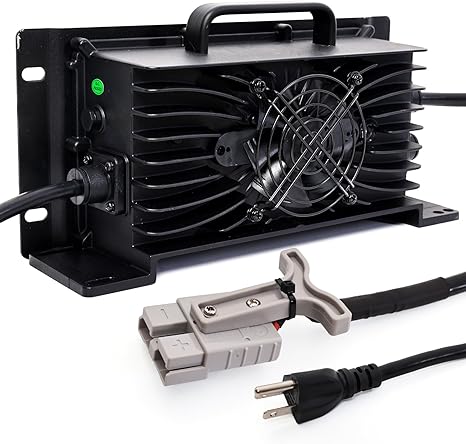Lacrosse is one of the most popular games in the United States of America and Canada. Are you a lacrosse player? This article on lacrosse game rules will help you improve your skills.

Lacrosse is fast and has aspects of basketball, soccer and hockey. Fans and players must know the basic rules.
Key Points
- Field Layout: The lacrosse field is 110 yards long and 60 yards broad, with goals 80 yards apart.
- Team Composition: Attackers, midfielders, defenders and a goalie make up each squad of 10 men or 12 women.
- Game Duration: Men’s lacrosse games include four 15-minute quarters, while women’s have two 30-minute halves.
- Substitutions: Unlimited substitutions are allowed in lacrosse, often on the fly.
- Protective Gear: Helmets, gloves, mouthguards and pads protect players. Women’s lacrosse includes less contact, therefore helmets are optional but eye protection is required.
Insightful analysis
Injury Prevention: The NCAA reports that 70% of lacrosse injuries occur during play, emphasising the need for protective gear.
Faceoffs and Draws
Overview
Faceoffs and draws start play after goals or quarters.
Key Points
Men’s Lacrosse Faceoff
- Two players face off in the centre of the field.
- After placing the ball between the sticks, the official indicates the start.
- Players use sticks and body positioning to fight for the ball.
Women’s Lacrosse Draw
- The ball is placed between two players’ erect sticks in the centre.
- Players aim the ball up on the whistle to take possession.
Insightful analysis
Faceoff wins translate to game control. Teams that dominate faceoffs can gain 60-70% possession, enhancing scoring chances.
Offside Lacrosse Rules
Offside regulations ensure balanced play by preventing teams from overusing specific parts of the field.
Key Points
- In men’s lacrosse, four players must stay on the defensive half and three on the offensive half. When too many players cross the midline, a violation occurs.
- In women’s lacrosse, five players must stay in the defensive zone and four in the offensive zone. Offside gives the other team a turnover.
Insightful analysis
Strategy: Teams who frequently break offside regulations lose 20% more possession time and are more likely to concede goals.
Checking and Body Contact Lacrosse Rules
Physical contact is allowed in lacrosse. However, rules restrict checks and body contact for player safety.
Key Points
- In men’s lacrosse, stick checking is legal if it targets the stick or hands holding it.
Body checking: Only allowed when the opponent possesses the ball or is within five yards. Hits on the head, neck, or back are illegal and punishable.
- For women’s lacrosse, stick checking must be done below the shoulder and with a controlled poke or raise. Intentional body checks are penalised, although incidental contact is tolerated.
Insightful analysis
Penalties: 30% of men’s lacrosse penalties are for illegal body checks, showing the sport’s aggression and need for discipline.
Scoring and Goal Lacrosse Rules
Goal scoring is the main purpose, but rules regulate how goals are scored and counted.
Key Points
- Scoring a Goal: To score a goal, the ball must pass the goal line between the posts and under the crossbar. Player’s stick or body cannot be in crease during shot.
- Goal Crease: A circular region around the goal reserved for the goalie. No offensive players can enter or touch the crease.
- Goalie Rights: Goalies are protected inside the crease and can face penalties for contact with opponents.
Insightful analysis
Shooting Accuracy: Top lacrosse players shoot 30–35%, meaning just 1 in 3 shots on goal score.
Time Violations and Possession Lacrosse Rules
Time violations regulate game speed by limiting team possession time under particular rules.
Key Points
- Shot Clock: Men’s lacrosse shot clocks normally last 80 seconds (NCAA rules) and compel teams to shoot within this time range. Each possession in women’s lacrosse has a 90-second shot clock.
- Stalling: Teams must keep the ball in play and not purposely delay. Authorities may issue stalling warnings.
- Clearing Rules: 20 seconds for teams to shift the ball from defensive to offensive half, promoting fast changes.
Insightful analysis
Teams with good shot clock management and no delaying violations have higher possession percentages, which affects game outcomes. Teams with above 55% possession win 75% of games.
Game Strategies and Tactics
Offensive Strategies
Motion Offence
Players move constantly to confuse the defence. Players switch positions and pass swiftly.
It generates mismatches against man-to-man defence.
Data: Motion offence teams get 15-20% more shots.
Pick and Roll
The conventional pick-and-roll approach involves one player setting a screen to free up a teammate for a shot or pass.
Success Rate: Increases shooting efficiency by 10-15% when done right.
Isolation Plays
Pits a powerful attacking player against an inferior defender.
Efficiency: Top attackers score 35-40% on solitary plays.
Fast breaks
Outnumbers defence by swiftly switching to offence on turnovers or missed shoots.
In high-paced games, 25% of goals come from fast breaks.
Defensive Formations and Tactics
Man-to-Man Defence
Each defender defends one opponent.
Benefits: Tight coverage and simpler double teams.
About 60% of high-level teams use it.
Zone Defence
Players defend zones, not opponents.
Positives: Effective against teams with top offensive players.
40% of teams use it, especially while defending a lead.
Sliding Defence
A defender leaves their man to cover a beaten teammate and the defence adjusts.
Success Rate: Sliding defence reduces opponent shooting accuracy by 10–12%.
Double teaming
Two defenders surround the ball carrier to force turnovers.
Impact: Doubles boost turnovers by 20-25% but exposes other attackers.
Special Teams and Situational Play
Man-Up (Power Play)
The opponent has a man in the penalty box. The advantaged team exploits the extra player.
About 40-45% of man-up situations result in goals.
Man-Down Defence
The team plays a player short due to a penalty, usually adopting a tight zone defence to restrict scoring. Teams kill penalties 55-60% of the time.
Faceoffs
Crucial for possession, especially after goals or opening quarters. Teams who win over 50% of faceoffs are 70% more likely to win.
Clearing and Riding
Clearing moves the ball from defence to offence, while riding prevents the opponent from clearing.
Efficiency: Aggressive riding reduces clears to 65-70% from 80%.
To maximise field performance, lacrosse teams must use these strategies and tactics. Specific,
- Formations,
- Adaptability and
- Special team play can drastically impact a game.
Youth and Beginner Lacrosse Rules
Differences in Rules for Youth Leagues
- Game Duration: Youth games feature shorter halves or quarters than adult leagues.
- Size: Smaller fields accommodate younger players and simplify play.
- Check Limits: Body checking is limited or avoided for younger children to reduce injury.
- Substitution Rules: To ensure all players have enough playtime and relaxation, frequent substitutions are allowed.
Simplified Equipment Requirements for Beginners
- Stick: Lighter sticks with larger heads help beginners manage balls.
- Protection: Helmets, face masks, gloves, shoulder padding and elbow pads are necessary. Rib pads and sports cups may be required by some leagues.
- Cleats: For field safety and traction, non-metal cleats are suggested.
Key Safety Considerations for Young Players
- Proper Fit: To avoid injury, equipment should fit properly. Ill-fitting gear is uncomfortable and less protective.
- Training: Coaches should emphasise safe play and equipment use.
- Supervision: Sufficient monitoring during practice and games assures safety and prompt injury response.
This review of youth lacrosse covers regulation differences, equipment demands and player safety.
Advanced Lacrosse Rules and Regulations
Detailed Breakdown of Advanced Rules
- Face-offs: Players must keep their sticks below their waist and vertical during face-offs. Penalties follow violations.
- Checking: Stick checks must be within the opponent’s stick area to avoid penalties. Only lawful body checking is allowed.
- Offside Rule: Each team must always have three players (including the goaltender) on their defensive half and three on their offensive half.
Rule Variations for Different Lacrosse Leagues
- NCAA: College lacrosse has stricter stick and player substitution rules. Game has 60-second shot clock.
- MLL (Major League Lacrosse): MLL includes a 30-second shot clock and more aggressive checking. Player equipment rules are slightly laxer than NCAA.
- NLL (National Lacrosse League): Indoors with a 30-second shot clock, the game incorporates board and crease restrictions that affect game flow and player strategies.
Recent Rule Changes and Updates
- Shot Clock Changes: NCAA and MLL shot clock rules have been updated to speed up games and enhance scoring.
- Player Safety: All leagues have improved headgear and equipment safety to limit injury risks.
Recap of Lacrosse Rules
Base Rules
- Game Duration: Four 15-minute quarters.
- Goal: Shoot the ball into the opponent’s net.
- Player: Each squad contains 10 players (3 attack, 3 middle, 3 defence, 1 goalie).
- Contact: Legal and controlled body checking is permitted.
Essential Gear
- Stick: Passing, catching and shooting stick: Netted head and shaft.
- Helmet: Helmets protect heads and contain masks.
- Gloves: Protect and provide stick-handling dexterity.
- Pads: Shoulder and elbow pads are impact-resistant.
Final Tips for New Players
- Practice Fundamentals: Practice catching, passing and shooting.
- Stay Aware: Watch games and attend clinics to learn rules and strategy.
Resources for Further Learning
- Book and Guide: Lacrosse handbooks have detailed rules.
- Online Tutorials: Use online lessons and drills to enhance skills.
- Local Clubs: Get coaching and experience on local teams.
FAQS
What are the basic rules of lacrosse?
Teams use sticks to carry, pass and fire a ball into the other’s goal in lacrosse. Players must follow,
- Checking,
- Ball handling and
- Field placement rules to avoid penalties and score goals.
How is the lacrosse field divided?
The lacrosse field has three zones:
- Attacking,
- Defence and
- Midfield.
Specific places include the goal crease.
What are the rules for checking in lacrosse?
Body checking is allowed, but it must be from the front or side and not target the head. Checking in women’s lacrosse is usually stick-to-stick.

















